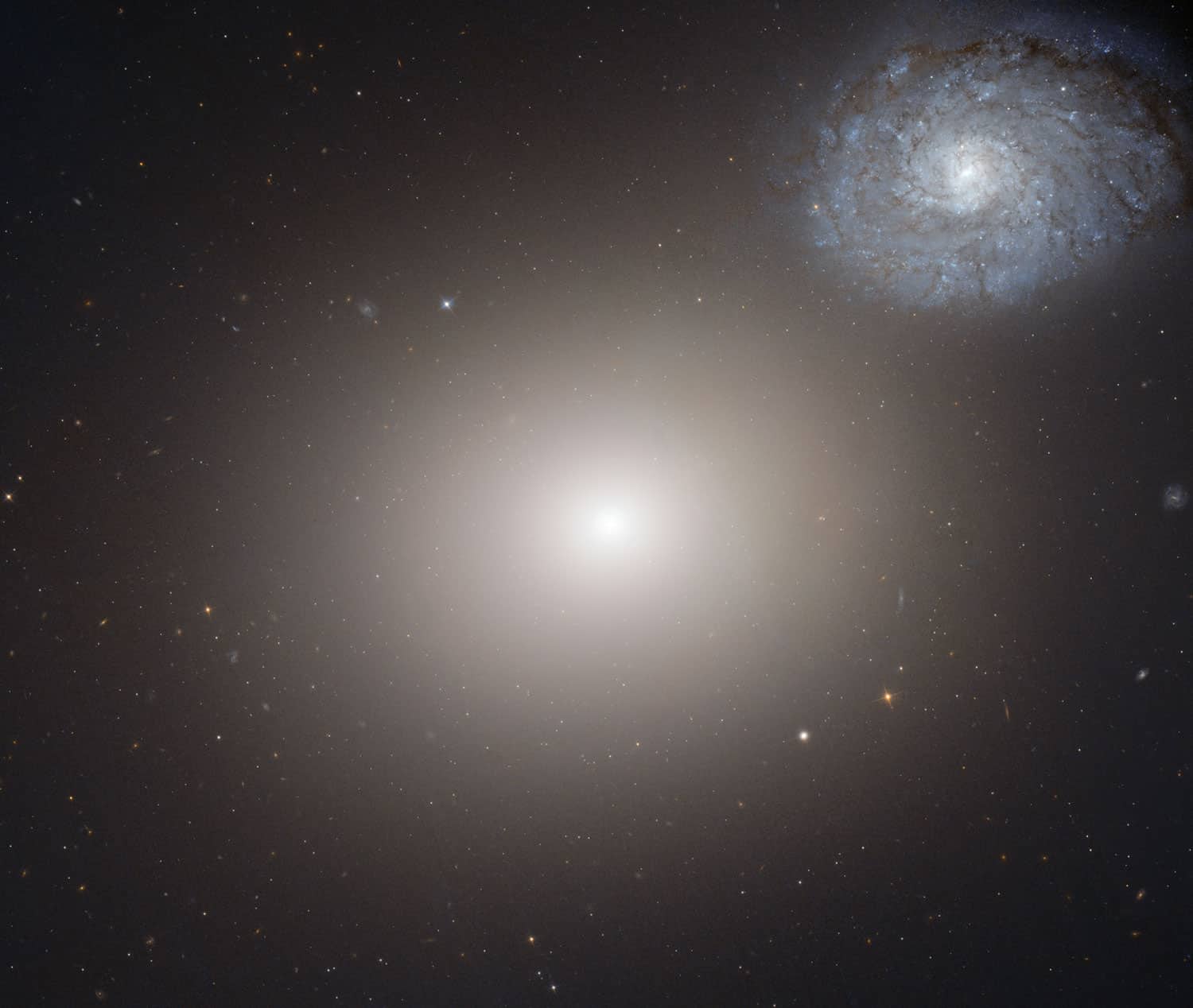NASA’s Hubble Space Telescope has captured a new image of the elliptical galaxy M60 along with the bluish spiral galaxy NGC 4647. At the center of the galaxy M60 a supermassive black hole lies 4.5 billion times the size of our Sun – one of the most massive black holes ever seen in the universe

The M60 galaxy has a diameter of 120,000 light-years and is located in Virgo constellation, about 54 million light-years from Earth. It is as massive as one trillion Suns. The apparent magnitude of the galaxy is 9.8. Therefore, to see its central area, it is best to observe it in May with a small telescope.
The galaxy’s neighbor, NGC 4647, can only be seen with giant telescopes. This galaxy is about two-thirds the size of M60. It is about the size of the Milky Way, so it is much less massive than the elliptical galaxy M60.
The two galaxies form a pair known as Arp 116. The degree to which these two galaxies interact has long been a question for astronomers. There is no evidence of new star formation in them, which would be one of the most obvious signals that the two galaxies are indeed interacting, despite the fact that they appear to overlap from Earth.
Earlier we reported on how James Webb got the most detailed picture of a galaxy with a double bar.
Based on the materials of Techexplorist.

